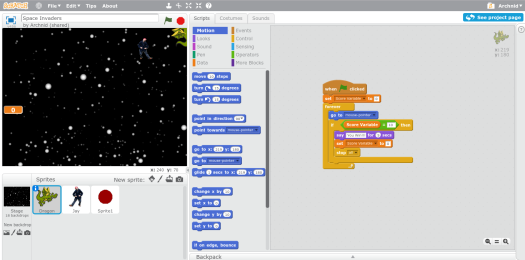
https://scratch.mit.edu/projects/137492242/#player

Frank Chen And The Incredible Work
Believe that it is impossible to truly fail; failure simply brings you closer to success

https://scratch.mit.edu/projects/137492242/#player
The first week is not what you’d expect;
So let’s get one thing straight before I answer this question. I am not saying that this school is bad, I think it is a great school for how far it has gotten in the past three years.
Okay, so the first week of school may not be what some of you would expect, it starts out pretty hectic, the classes would be chaotic and to be honest, lunch was not enjoyable either because there would be nowhere to sit. Since you probably haven’t made that many close friends yet, you are left being a wallflower. Once the week is over and everything is calm, it would seem like a normal school so take my word for it when I say that the first week is not stable.
This advice would help me be successful in school because it helps me know that school would seem more fun if I knew how high school was really like.
How would this have helped you be successful outside of school?
This would help me be successful outside of school because if I could adapt to a new school over time knowing that things would get better then I can adapt anywhere.
Would you have listened to the advice in September? Why or why not?
I think I would’ve listened to the advice in September because I would’ve taken any advice that helps me get through all the madness of that week but because I also think that the first impressions of the school were not how I would think they would be.
Describe what you would have changed if you had heard and listened to the advice.
I would’ve changed my thoughts on this school in the first week because I didn’t know what to expect since I’ve only seen movies of what high school is like.
How will this advice affect your experience as a 10th grader at Maker next year?
This advice would affect my experience as a 10th grader at Maker next year because I shouldn’t be surprised of how the first week of school is like considering that it would probably be crazy.
Good luck!
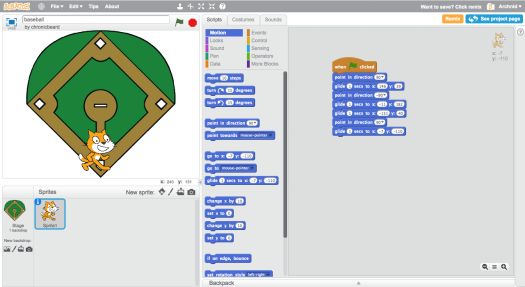
https://scratch.mit.edu/projects/164183823/
What did you do first?
Firstly, I tested out various movement blocks to see what I could do with them and kept note of the coordinates I needed to use to keep the cat on track in the program.
What did you do next?
Next, I constructed the code and tested the program and fixed any errors that caused the program to not meet the program requirement.s
What did you do last?
Finally, I tested my program to make sure it ran as it should.
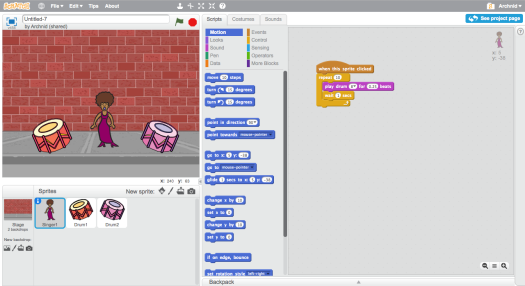
https://scratch.mit.edu/projects/164178391/
What did you do first?
First I selected all the musical instruments I wanted to use, I chose a singer and two different drums.
What did you do next?
Next, I browsed through the different drum sounds and put them inside repeat loops so that each time the sprite is clicked, it will play it’s sound 10 times in a row before it stops.
What did you do last?
Lastly, I tested the program to make sure that it runs in the way that I want it too, and that there is no bugs in the program.
Explain how you know which kinds of energy are at each location.
I know that there is only gravitational potential energy at location A since the marble isn’t moving yet so there is no kinetic energy, and there is no pull or push forces acting on the marble so there is no elastic energy.
I know that there is kinetic, gravitational potential, and dissipated energy at location B since the marble started moving, resulting in some kinetic energy. Also, the marble is inside a loop, which means that the marble is not on ground level, resulting in some gravitational potential energy. Since there is friction between the marble and the track, there is some dissipated energy, resulting in the loss of 55% of our initial energy.
I know that there is kinetic, gravitational potential, and dissipated energy at location C since the marble is moving, resulting in a small amount of kinetic energy, 55% of the kinetic energy at location B. Also, the marble is going over a bump, which means that the marble is not on ground level, resulting in a small amount of gravitational potential energy since the bump is only 2cm tall. Since there is friction between the marble and the track, there is a lot of dissipated energy, resulting in the loss of 55% more energy than at location B.
Describe how energy is transferred between forms from location A to location B, and from location B to location C. Identify the forces responsible for these transfers of energy.
From location A to location B, all of the gravitational potential energy transfers into kinetic, gravitational potential, and dissipated energy. Due to gravity pulling down on the marble, the marble rolls down the ramp, which results in a transfer of gravitational potential energy to kinetic energy. As the marble is rolling down the ramp, friction is causing some of the kinetic energy to be transferred from kinetic energy to dissipated energy.
From location B to location C, 55% of the marble’s kinetic energy is transferred into dissipated energy since friction causes the marble to lose 55% of its energy, and the longer the marble is on the track, the more energy it will lose. The marble’s gravitational potential energy is lowered drastically since the bump it needs to get over is only 2cm in comparison to the 14cm high loop. The difference in gravitational potential energy is transferred into kinetic energy. Since the marble’s kinetic energy is larger, the dissipated energy is also larger.
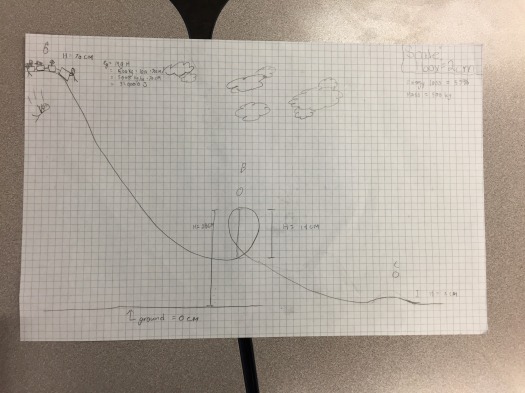
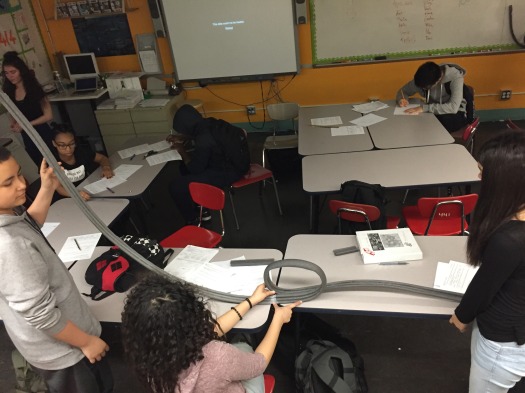
One way that our group knew that our marble would be able to make it through the whole track was making sure that location B was at least 55% shorter than the initial start height location A. Also location C had to be at least 55% shorter than location B in order for the marble to make it over the hill. Since the initial start height is 70cm and the height of the loop is only 14cm, the marble will be able to go through the loop since 55% of 70 is 38.5, meaning that the marble can go through a loop that is 38.5cm or smaller. The marble will go over the hill since the loop is 14cm, while the hill is 2cm. 55% of 14 is 7.7, meaning that the marble will be able to go over a hill that is 7.7cm or lower.
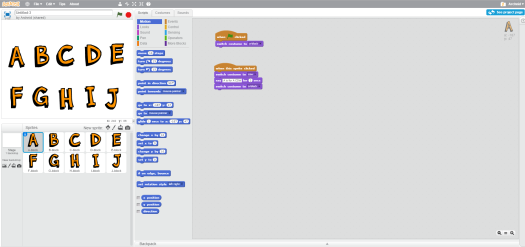
https://scratch.mit.edu/projects/162882679/
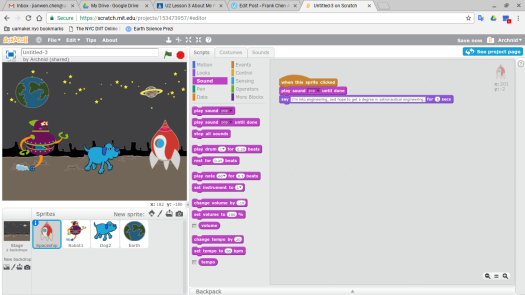
https://scratch.mit.edu/projects/153473957/#player
What are you most proud of? Why?
I was most proud of how I improvised and problem solved to combine all of the blocks to make one full project talking all about me.
What did you get stuck on? How did you get unstuck?
I got stuck on the part which talks about my interests and things I like as I did not know how to display all of them. I got unstuck by making all of the costumes and using the changing costumes block to show my interests and hobbies.
What might you want to do next?
What I would do next is to see what options I can take and use the most sensible one. I can figure out what problems I have a pathway to get out of them.
What did you discover from looking at others’ About Me projects?
What I discovered by looking at other About Me projects is that you should talk about general facts that appeal to others and make them interested in what you are saying which I tried to input into my About Me project as much as I could.
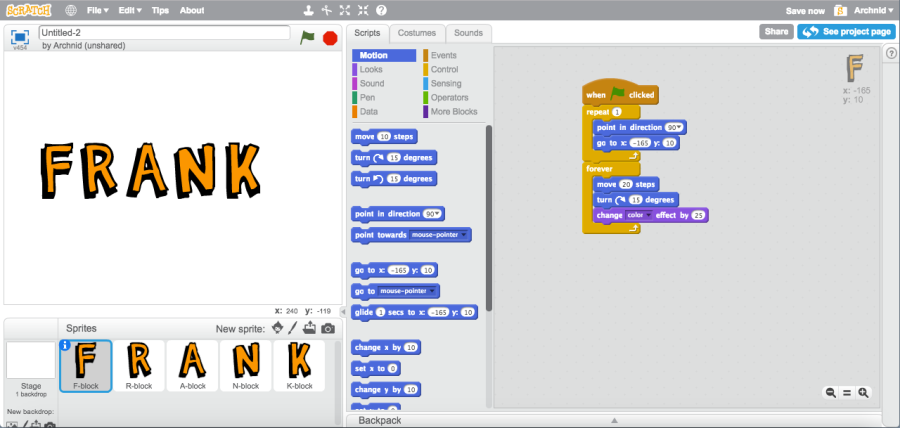
https://scratch.mit.edu/projects/150822703/
What was surprising about the activity?
I think something that was surprising about the activity is the simplicity of the program.
What new blocks did you learn in this project?
To be honest, I didn’t really learn any new blocks during this project.
When do you feel most creative?
I think I feel the most creative, when I’m at the beginning stages of developing a program since I’m still trying to figure things out.
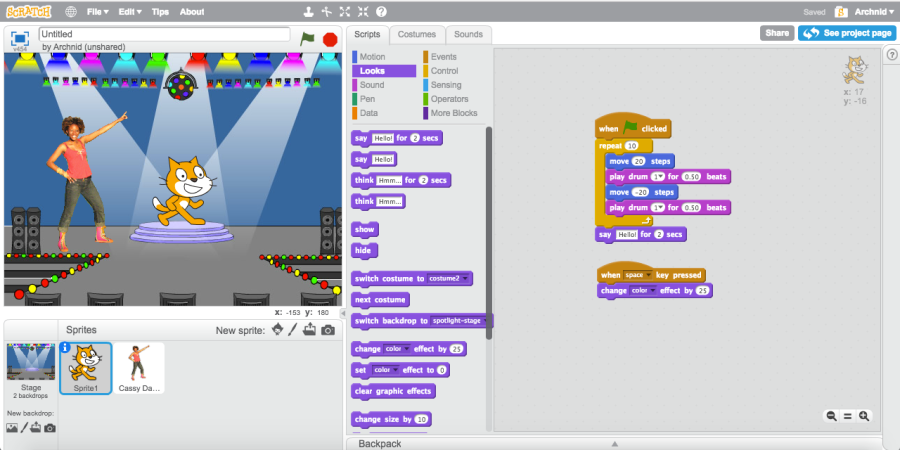
https://scratch.mit.edu/projects/150378061/

https://www.powtoon.com/online-presentation/gdHDVNTrm7S/?mode=movie#/
What is the difference between the RAM memory and Hard Drive?
There are many differences between RAM memory and the hard drive, one of them is that RAM is volatile memory, meaning that once power to the RAM is cut, all the information will be lost. Hard drive memory, on the other hand, is non-volatile so it will continue to store the information even when power to the hard drive is cut. Another difference between RAM and the hard drive is that RAM is way faster than a hard drive, thus running applications, and the information that currently running applications need will be stored in RAM instead of the hard drive. Another difference between RAM and a hard drive is the cost difference. On average, RAM costs $4.37 dollars per gigabyte. On the other hand, hard drive space is only $0.05 dollars per gigabyte.
What did you learn about computers from the project?
I think something that this project showed me was an analogy between computers and humans. For example, the heart was like the power supply, the speakers were the mouth and the brain was the operating system.